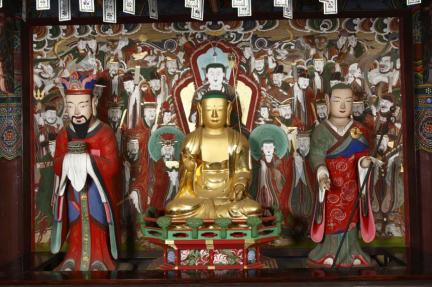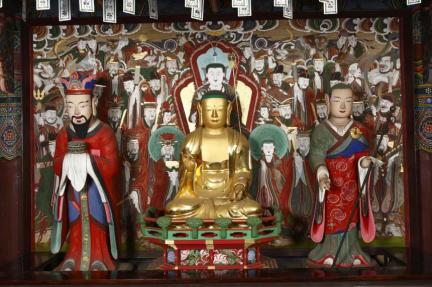국가유산 검색
보물
강화 전등사 목조지장보살삼존상 및 시왕상 일괄 (江華 傳燈寺 木造地藏菩薩三尊像 및 十王像 一括)Wooden Ksitigarbha Bodhisattva Triad and Ten Underworld Kings of Jeondeungsa Temple, Ganghwa
| 분 류 | 유물 / 불교조각 / 목조 / 보살상 |
|---|---|
| 수량/면적 | 31구 |
| 지정(등록)일 | 2012.12.27 |
| 소 재 지 | 인천광역시 강화군 전등사로 37-41 (길상면, 전등사) |
| 시 대 | 1636년(인조 14) |
| 소유자(소유단체) | 전등사 |
| 관리자(관리단체) | 전등사 |
















